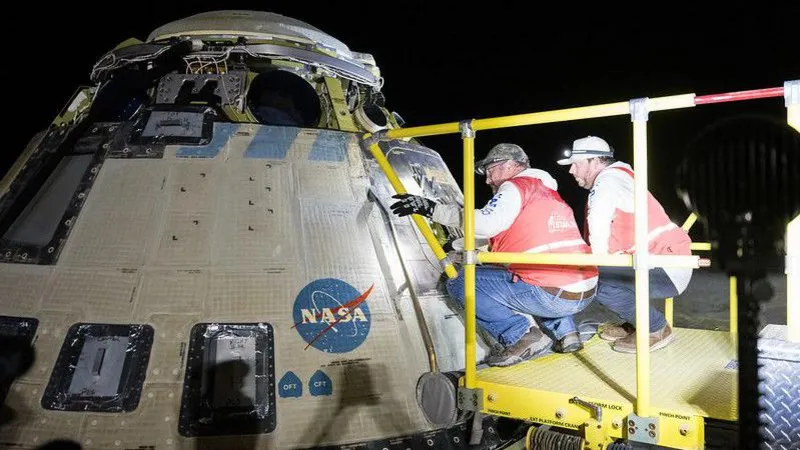Boeing’s Starliner spacecraft has made a notable return to Earth, albeit with an unconventional twist: the astronauts who were supposed to be aboard remain on the International Space Station (ISS). The Starliner, which is designed to transport astronauts to and from the ISS, proceeded with its journey in autonomous mode after undocking from the space station. Initially, it had launched with NASA astronauts Butch Wilmore and Suni Williams on board, but following several technical setbacks, both astronauts were deemed unable to safely return with the spacecraft. Instead, they will remain on the ISS and will fly back to Earth in a SpaceX Crew Dragon capsule, prolonging their mission from what was intended to be an eight-day visit to an extended stay of eight months.
The journey back of the Starliner lasted six hours, culminating in a successful landing at the White Sands Space Harbor in New Mexico. NASA officials expressed satisfaction with the successful return while acknowledging the disappointment of the altered mission plans. Parachutes were deployed to help slow the descent of the spacecraft after its re-entry into the Earth’s atmosphere, effectively ensuring it landed safely at 11:01 PM local time. Despite the unexpected turn of events, NASA reassured that both astronauts remained in good spirits, maintaining regular communication with their families while they awaited their eventual return.
Steve Stich, NASA’s commercial crew program manager, emphasized the commitment and professional dedication of both astronauts, stating that they understood the importance of the safe return of the Starliner. The test flight marked Starliner’s first mission with astronauts on board but was marred by issues that arose shortly after takeoff from Cape Canaveral, Florida. The spacecraft encountered technical difficulties, including helium leaks which are critical for its propulsion system and troubling malfunctions with several thrusters, leading to concerns about its safety for carrying crew members back home.
In late August, after considerable investigation by Boeing engineers and NASA, it was determined that the Starliner was not adequately safe for the astronauts’ return. Reflecting on this development, Stich acknowledged that while the successful landing brought happiness to the team, there was also a sense of regret that the mission hadn’t proceeded as planned with the astronauts aboard the spacecraft. He emphasized the ongoing work needed to fully understand the technical issues and to forge a path forward for the program, indicating that additional steps will be necessary to ensure the spacecraft’s reliability in future missions.
A news briefing held after the landing featured only NASA officials since Boeing representatives were absent. When asked about this decision, a NASA official clarified that Boeing chose to let NASA lead the representation for the mission. Meanwhile, Boeing issued a statement recognizing the efforts of the teams involved in the successful undocking, deorbiting, and re-entry of Starliner, reiterating its commitment to reviewing the collected data before determining the next steps for the spacecraft program.
Overall, the Starliner incident underscores the challenges that come with space exploration, illustrating the importance of safety and reliability in crewed missions. While the successful landing of the spacecraft marks a significant step for Boeing and NASA, the extended timeline for the astronauts’ return signifies ongoing challenges and the need for robust solutions in the development of commercial crew spacecraft. As both organizations strive to iron out the complexities of the Starliner mission, lessons learned from this experience will undoubtedly shape the future of crewed spaceflight endeavors.


